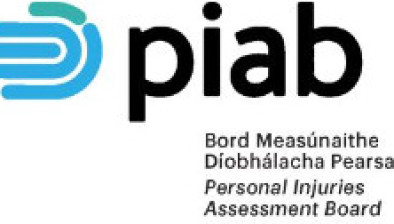High Court: Defendant successfully argues that accident report form is covered by litigation privilege

Killian Flood BL
The High Court has determined that an accident report form compiled by a defendant to a personal injuries claim was not discoverable due to litigation privilege.

About this case:
- Citation:[2021] IEHC 180
- Judgment:
- Court:High Court
- Judge:Mr Justice Anthony Barr
In reaching the decision, the court accepted that a personal injuries claim is usually brought against an employer following an accident at work and it was “prudent and reasonable” for an employer to conduct an investigation in contemplation of litigation.
The plaintiff had submitted the defendant’s report was discoverable because it was made before the plaintiff had threatened litigation. Further, it was said that the defendant made the document to comply with health and safety legislation. However, the court rejected these arguments and was satisfied that the document was subject to privilege.
Background
The plaintiff, Ladislav Kunzo worked in a meat packing facility run by the defendant, Kepak Longford Unlimited Company. On 14 September 2016, Mr Kunzo claimed to have suffered a bad back injury while de-boning a large piece of meat. He consulted with his solicitor on 14 October 2016 and a letter of claim was sent on 19 October 2016. A personal injuries summons subsequently issued.
In November 2019, the parties agreed to an order for discovery on consent. The order included category (d), which was the accident report form. An affidavit of discovery was sworn in which the defendant claimed privilege over category (d). The plaintiff then issued a motion seeking to compel the production of the document.
The accident investigation report form contained a number of documents, including a report by the company doctor, a copy of the standard operating procedure, notes from an interview with the plaintiff, witness statements and photographs.
The plaintiff made two points to support the motion. First, it was said that the accident report was compiled prior to the plaintiff instructing his solicitor or sending the letter of claim. As such, the plaintiff claimed that the document was not made in contemplation of litigation.
Second, the plaintiff said that the accident report form was made to comply with the defendant’s reporting obligations to the Health and Safety Authority. The plaintiff exhibited a sample report form from the HSA, which included details of witness statements and photographs. Accordingly, it was submitted that the dominant purpose of the accident report documents was to comply with reporting obligations.
In response, the defendant stated that almost all workplace accidents resulted in personal injury litigation and, as such, all accidents were treated as potentially giving rise to litigation. Therefore, it was claimed that it was necessary to conduct a full investigation of every accident to properly defend the expected action. Further, it was noted that the accident report form (which was provided to the judge) expressly stated that the investigation was conducted in contemplation of litigation.
The defendant also stated that it relied heavily on the investigation report to assess its exposure in a given case. As a matter of practice, all interviews, witness statements and photographs were sent to the defendant’s solicitor, with a further meeting to ascertain potential liability and costs. As such, it was claimed that the dominant purpose of the accident report was to assess legal liability and was therefore subject to privilege.
While it was accepted that the documents may have the ancillary purpose of assisting with periodic health and safety reviews, the defendant claimed that the main component of the reviews was the risk assessments of the defendant’s health and safety department, with only minor weight ascribed to the impugned documents. In relation to statutory reporting obligations, the defendant submitted that there was no statutory requirement to provide a list of witnesses, witness statements or photographs to the HSA.
High Court
Giving judgment in the case, Mr Justice Anthony Barr held that the accident report form was made in contemplation of litigation and refused to order its discovery. The court considered the principles outlined in Artisan Glass Studio Ltd v. The Liffey Trust Ltd [2018] IEHC 278 and Colston v. Dunnes Stores [2019] IECA 59 and noted that it was not necessary for proceedings to have been issued or threatened for litigation privilege to apply. It would be sufficient if the documents were created based on the reasonable anticipation of a party that litigation would follow.
The court held that category (d) in the discovery order only contained reference to the accident report form and did not mention any of the other documents associated with the investigation. As such, the court determined that these supporting documents were not covered by the discovery order.
Considering the accident report itself, the court accepted that it was “prudent and reasonable” for the defendant to carry out a thorough investigation “to ensure that the defendant will be in the best possible position to mount whatever defence may be open to it.”
The court noted that the report was written at least a month after the accident, with the various steps of the investigation outlined in the document. These steps included reviewing CCTV, interviewing the plaintiff and gathering witness statements. In light of this, the court was satisfied that the document was not merely drawn up on the day in question, but rather was the result of a detailed investigation in preparation for litigation.
Further, the court rejected the submission that the report was made to comply with the defendant’s statutory reporting obligations. Based on the evidence from the defendant, the court held that the use of the documents in the defendant’s report to the HSA was entirely subsidiary to the main purpose of preparing for litigation.
Conclusion
The court refused the application to compel the discovery of the documents on the basis that the documents were covered by litigation privilege.









